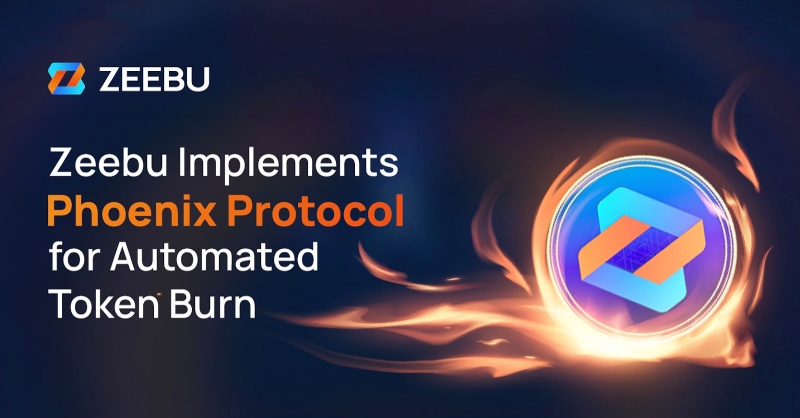Zeebu, the Web3 Neobank platform specializing in telecom transactions, proudly announces the introduction of the ZBU Phoenix Protocol. This strategic initiative underscores Zeebu’s unwavering commitment to building a robust and sustainable ecosystem built on trust, transparency, and value for all stakeholders.
Zeebu is a blockchain-based platform, specifically engineered for telecom transactions. It aims to revolutionize the sector by enabling automated settlements, facilitating seamless global payments, and bolstering efficiency and security through a unified telecom payment ecosystem. The ZBU token is a key component of the Zeebu platform. It plays a pivotal role in enabling smooth global transactions and introducing an on-chain loyalty mechanism. The ZBU loyalty token serves to incentivize and reward partners within the ecosystem for their active participation.
At the core of Zeebu’s ethos lies a steadfast commitment to revolutionizing finance and fostering sustainable growth. With the introduction of the ZBU Phoenix Protocol, Zeebu reaffirms its dedication to enhancing the long-term value proposition of the ZBU token in the market. The ZBU Phoenix Protocol, inspired by the symbolic cycle of rebirth and renewal associated with the phoenix, is meticulously crafted to strengthen the ZBU ecosystem’s health and stability.
The ZBU Phoenix Protocol focuses on optimizing the ZBU token supply through a dynamic auto-burn mechanism. This mechanism carefully adjusts the burn rate based on the current market price of ZBU and platform usage patterns, ensuring a strategic approach to bolstering the ecosystem’s health and long-term stability.
Transparency and accountability are at the forefront of Zeebu’s operations. Each token burn event will be meticulously recorded and publicly accessible on the blockchain, providing stakeholders with full visibility into the process. Additionally, a portion of the tokens from the accumulated burning pool will be allocated towards new initiatives, further enriching the Zeebu ecosystem.
“The ZBU Token Burn Program reflects our commitment to innovation and sustainability in the decentralized finance space,” said Raj Brahmbhatt, the CEO and Founder of Zeebu. “By implementing this initiative, we aim to ensure a stable market presence of $ZBU token, while also promoting ecosystem growth.”
As Zeebu continues to spearhead innovation in the realm of decentralized finance, the ZBU Token Burn Program serves as a cornerstone of its strategic vision. By reducing token supply systematically and transparently, Zeebu is poised to create a more resilient and prosperous financial ecosystem for all stakeholders.
Zeebu is gearing up to release more specifics about the timeline and quantity for the ZBU token burn. The comprehensive information about the Phoenix Protocol can be found here.
About Zeebu:
Zeebu, the pioneering Web3 Neobank, having settled more than half a billion in telecom transactions, is quickly emerging as a trusted payment and settlement partner for global telecom businesses. The platform, currently serving over 100 active telecom carriers, is revolutionizing the industry with the introduction of blockchain-based settlements and the ZBU loyalty token. The ZBU token is designed to facilitate instant and secure global transactions and reward participants for successful settlements on the platform.


 Entertainment4 weeks ago
Entertainment4 weeks ago
 Entertainment4 weeks ago
Entertainment4 weeks ago
 Entertainment4 weeks ago
Entertainment4 weeks ago
 Entertainment4 weeks ago
Entertainment4 weeks ago
 Entertainment3 weeks ago
Entertainment3 weeks ago
 Entertainment4 weeks ago
Entertainment4 weeks ago
 Entertainment3 weeks ago
Entertainment3 weeks ago
 Entertainment4 weeks ago
Entertainment4 weeks ago












